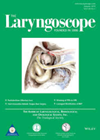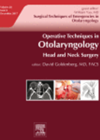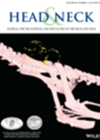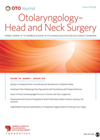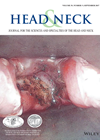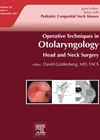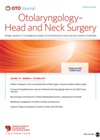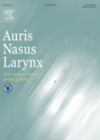
Journal Reviews
One anastomosis or two
This is a cumulative meta-analysis from Hong Kong reviewing 27 articles and a total of 7,389 flaps. The authors, at the outset, acknowledge that the number of anastomoses is not the only factor of venous compromise and flap failure. Nonetheless...
Which da Vinci surgical system? Novel flexible, single-port versus current multiport, rigid-arm robotic surgical system
The da Vinci robotic surgical system has transformed how oropharyngeal head and neck surgery can be delivered. The existing da Vinci Si model has challenges: the dimensions of this are larger than would be ideal for head and neck surgery...
Deep space neck infections and their management
This article explores the approach to managing patients with deep space neck infections. Clearly, an understanding of the fascial planes within the neck is required which then provides an understanding of the route of spread in these cases. The authors...
The newest robot from da Vinci – what can it offer for hypopharyngeal cancer surgery?
The standard existing da Vinci surgical robot (the Si model) has been much maligned for not being optimally designed for transoral access and endoscopic manoeuvrability in head and neck surgery. This preclinical work from Holsinger and his team looks at...
An algorithm to distinguish between distant metastases and metachronous lung primary in patients with HPV-related oropharyngeal cancer
Distinguishing between distant metastases of HPV-related oropharyngeal squamous cell carcinoma (OPSCC) and metachronous primary lung squamous cell carcinoma (SCC) is important as it has implications for treatment, prognosis counselling, and registry data. Although p16 immunohistochemistry (p16 IHC) is widely accepted...
Risk factors in free flap failure
This is a retrospective analysis from China of 881 free flaps over nearly four years, 49 of which were ‘taken back’, 26 of which were lost, giving a 97% success rate. The commonest cause of flap failure was venous thrombosis....
Evidence for diagnostic role of narrow band imaging in the outpatient setting for head and neck squamous cell carcinoma
Narrow band imaging (NBI) uses light in the blue and green spectrum to differentiate areas of carcinoma from normal or inflammatory tissue. This tertiary referral head and neck unit in Spain used white light endoscopy as initial screening for all...
Managing the thyroglossal duct cyst
Although the operation to remove thyroglossal cysts and their tracts is commonly performed, a full understanding of the possible anatomical locations of the tracts may be less appreciated. This article helps the reader understand the possible variations available which should...
Neck dissection in adenoid cystic carcinoma is a risk worth taking?
This paper from Stanford University presents impressive figures to guide the debate on the extent of surgical management in adenoid cystic disease. Adenoid cystic carcinomas present a particular problem in that they can recur even after 20 years. They have...
Power tools dance off
The use of the harmonic scalpel is popular with some head and neck surgeons. This study looked at selective neck dissections for 40 patients with oral cavity carcinoma. They were randomised into harmonic scalpel (HS) use and monopolar electrocautery. The...
Sentinel nodes and UADT tumours
This is the review of a multicentre study to set practical guidelines for sentinel node techniques (SLN) in upper aerodigestive tract (UADT) squamous cell carcinomas including classical and extended indications. SLN biopsies are strictly indicated in patients with clinically and...
Less pain more gain: impact of prophylactic gabapentin on swallowing outcomes in head and neck cancer patients undergoing radiation treatment
Patients planned for chemoradiation to the head and neck are usually advised to expect some pain and soreness during their treatment and that pain relief will be offered as and when it is required. Uncontrolled pain and mucositis affect oral...


